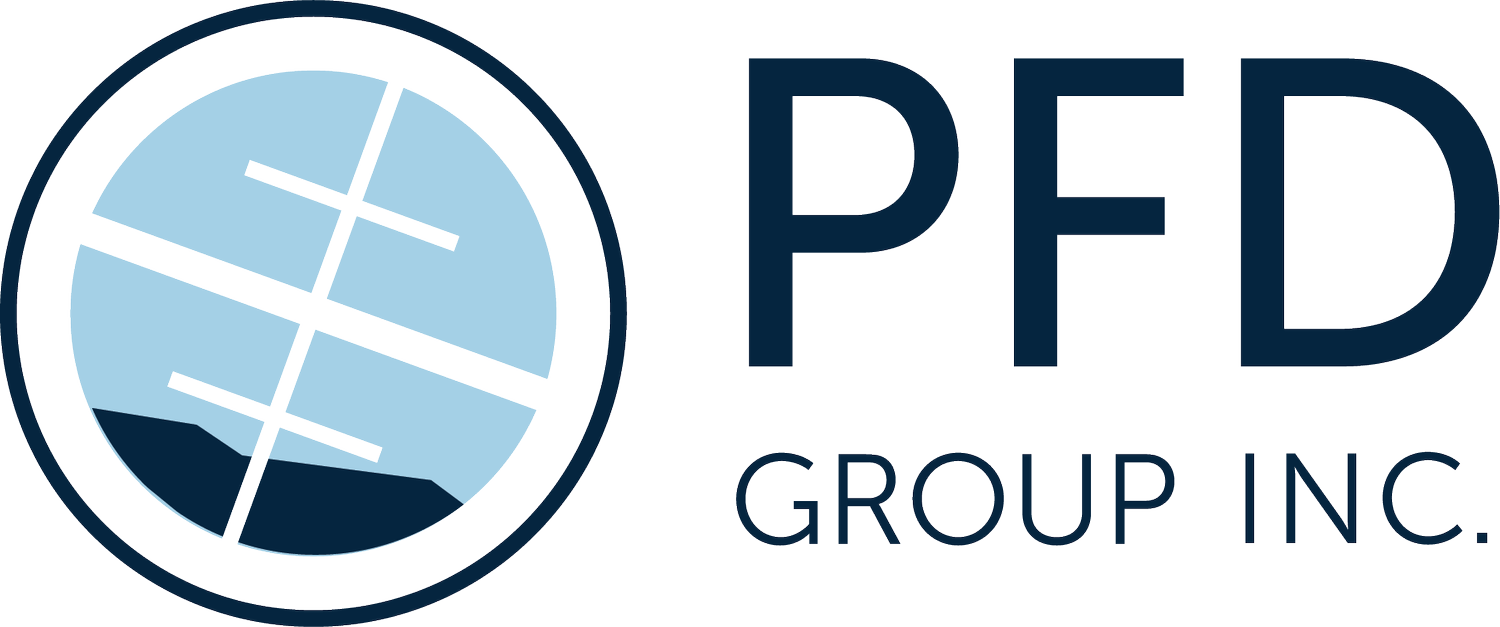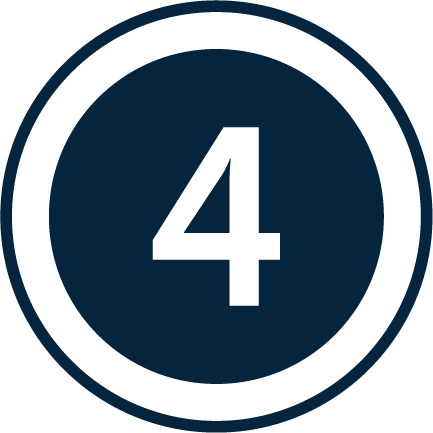As senior leaders, we have all experienced the devastating consequences of one bad hire. Whether this person is outwardly toxic, or they just don’t understand the importance of the company’s culture, the results of a mishire can be devastating. In my position as a strategic coach who has worked with companies in a diverse set of industries with diverse teams, I’ve seen mishires in key senior roles cost companies hundreds of thousands – if not millions – of dollars in lost revenue. Further than that, some of these mishires have even driven outstanding team members away from the company, adding insult to injury. Conversely, the right hire can be a force multiplier – giving your team energy, creatively solving problems, and exercising enthusiasm for what your business is aiming to achieve. Regardless of what type of business you’re in, your people, especially the people in key roles, really make a difference to your success.
So, we know how critical the hiring process is to get right, but we also know that this process can be extraordinarily challenging. In our coaching experience, when businesses don’t have a talent strategy, we’ve seen about a 50% success rate in hiring. This process is crucial, and yet most businesses don’t even know where to begin in creating an effective and reliable strategy to find and recruit the right talent. So, let’s talk about it.
There are four elements that should be present in a strong talent recruitment strategy:
Strong Cultural Foundation
Clear recruitment timeline and clear expectations for roles
Always be recruiting
Rigorous Hiring process
Let’s discuss more in-depth as to what these elements mean.
Strong Cultural Foundation
As senior leaders, we must be able to envision and clearly communicate to our organizations where our companies are going and the steadfast values to which we hold on to get there. What’s more, our teams need to know the values so that they know what behaviors are acceptable, and they need to buy into the long-term goal of the company. This is accomplished with our cultural foundation, and it is critical that everyone in our company buys into and lives out of it. Our cultural foundation includes: BHAG, core values, and core purpose.
BHAG
According to the creator Jim Collins, the BHAG stands for Big Hairy Audacious Goal, and it is a compelling mission for the company – an inspiring, unifying focal point that stimulates and energizes the team to make vast progress. Getting to your BHAG is a long and arduous process, and it is therefore incredibly important that your team is aligned, otherwise you won’t get there. At PFD, our BHAG is to steward a movement that, no matter where you are born, anything is possible.
Core Values
Your core values ask this question: what are the consistent, accepted behaviors of your team members? The key to core values to drive behavior, and they are utterly meaningless if CEO isn’t protecting and stewarding them. These core values drive everything that we do, and the communicate to the world – including our prospective talent, what we stand for. At PFD, our core values are grow to give, create client value, communicate proactively, invest in team and community, and be the confidant.
Core Purpose
Your core purpose answers one very specific question: why does your company exist? It’s a very simple concept, but it is critical that everyone in your organization knows the answer to it. If everyone knows what your core purpose is, you are able to keep on track with your strategic vision, because it creates alignment toward your way of being. At PFD, our core purpose is to steward lives
Clear recruitment timeline and Clear expectations for roles
After you establish your strong cultural foundation, you will need to do some creative thinking and prep work to make sure you understand who you need, and what exactly they will need to do to be successful in their role. We have two tools that will be helpful for this: the Strategic Functional Accountability Chart, and the Job Scorecard. We will get into these tools in a moment, but let’s first talk about how to create an effective strategy that will spur on progress towards your BHAG.
At PFD, we recommend that you align your strategy to a 3-year timeline. This line of thinking comes from thought leader and serial entrepreneur Shannon Susko, who created the 3HAG methodology. The 3HAG is built on the concept of the Big Hairy Audacious Goal (BHAG), and it breaks down this massive goal into 3-year Highly Achievable Goals (3HAG). Three years tends to be this magic number for a timeline – it is just far enough away that you can create a real, tangible strategy towards your BHAG, but it is short enough that you can translate that short-term strategy into a strategic process. Your 3HAG will ignite immense team spirit and serves powerful tool for visionary companies to stimulate progress. From your 3HAG, you can create your 1-year Highly Achievable Goal (1HAG) (encapsulating your annual priorities), as well as your 90-Day Plans (your quarterly priorities)
If you would like to learn more about 3HAG, as well as talent recruitment, make sure to check out our FREE virtual workshop on May 13th, 2021 from 11:00 AM – 1:00 PM MT. Shannon Susko will be joining us that day and we will be giving you personalized feedback on your strategy.
The FACe and SFACe
Now that we have the timeline with which you can align your overall strategy to, let’s talk about our current team and what they are accountable for. There is one tool created by Verne Harnish from Scaling Up that helps determine this: the Function Accountability Chart (FACe). We recommend filling out the FACe in a strategy session with the senior team in the room.
Let’s break down the FACe, starting with defining what a function– the “F” is. A function is a key action someone in your organization must take so that your business can grow to meet your 3HAG. It isn’t their title, rather their actions that directly contribute to business health. This is why there is “treasury” and not “CFO” on the chart above. Next, accountability – the “A”- means that there is ONE person that is making sure that progress on that function happens, that progress is tracked. In this column, we are asked to write a name of a person on our team (someone who is able to take on the challenge of making progress in that role. The next two columns then ask us to identify the Key Performance Indicators and Outcomes that they need to Drive.
So, we have our strategy with our 3HAG, 1HAG, and 90-Day-Plan and we have clarity into our people and execution in our company today with our FACe. Here’s what we’re missing to combine the two: if we truly want to achieve our 3HAG, our company needs to look much different than it does today, in terms of our people and their functional roles. Think about it: you as a CEO likely have your name as accountable for several of these functions. With all that you are accountable for, do you truly have time to drive the growth in your 3HAG? You’re already so busy, and you’re just going to get busier. In the next three years, your goal is clear: get your name off any function that isn’t the head of company and fill those functions with extraordinary people that fit your culture to free up your time. See the Strategic Function Accountability Chart:
This tool highlights the people in the key roles in your organization, and who you need to fill what roles and when. For example, perhaps your organization today does little research and development or innovation today. However, you’ve gone through a strategy session with your team, and you have discovered there is a significant gap in the market in your industry for bold innovation, and a strong emphasis for R&D / Innovation is a key differentiator that you have identified as a part of your 3HAG – you know that you need to be moving towards R&D on a 3-Year Timeline, and you will want to fill in that functional role. Then, you will want to fill out the names of who is responsible for what today. Then, with your senior team, consulting your 3HAG, you will want to fill out who will be responsible for what in three years’ time, making sure that every senior member is simplifying their functional role as much as possible. You will want to then work backwards – going through your 1HAG and finally to your 90-Day Plan.
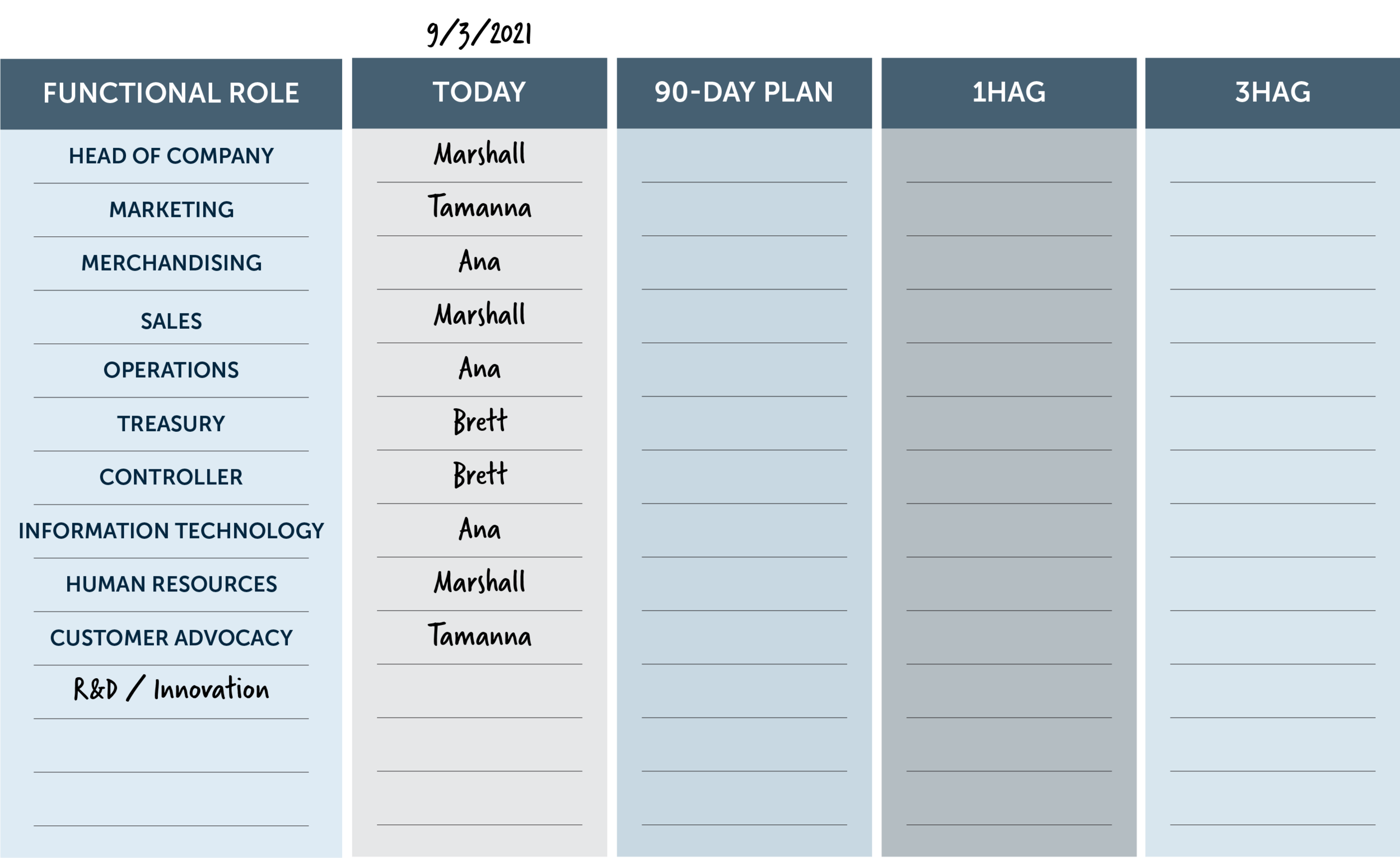
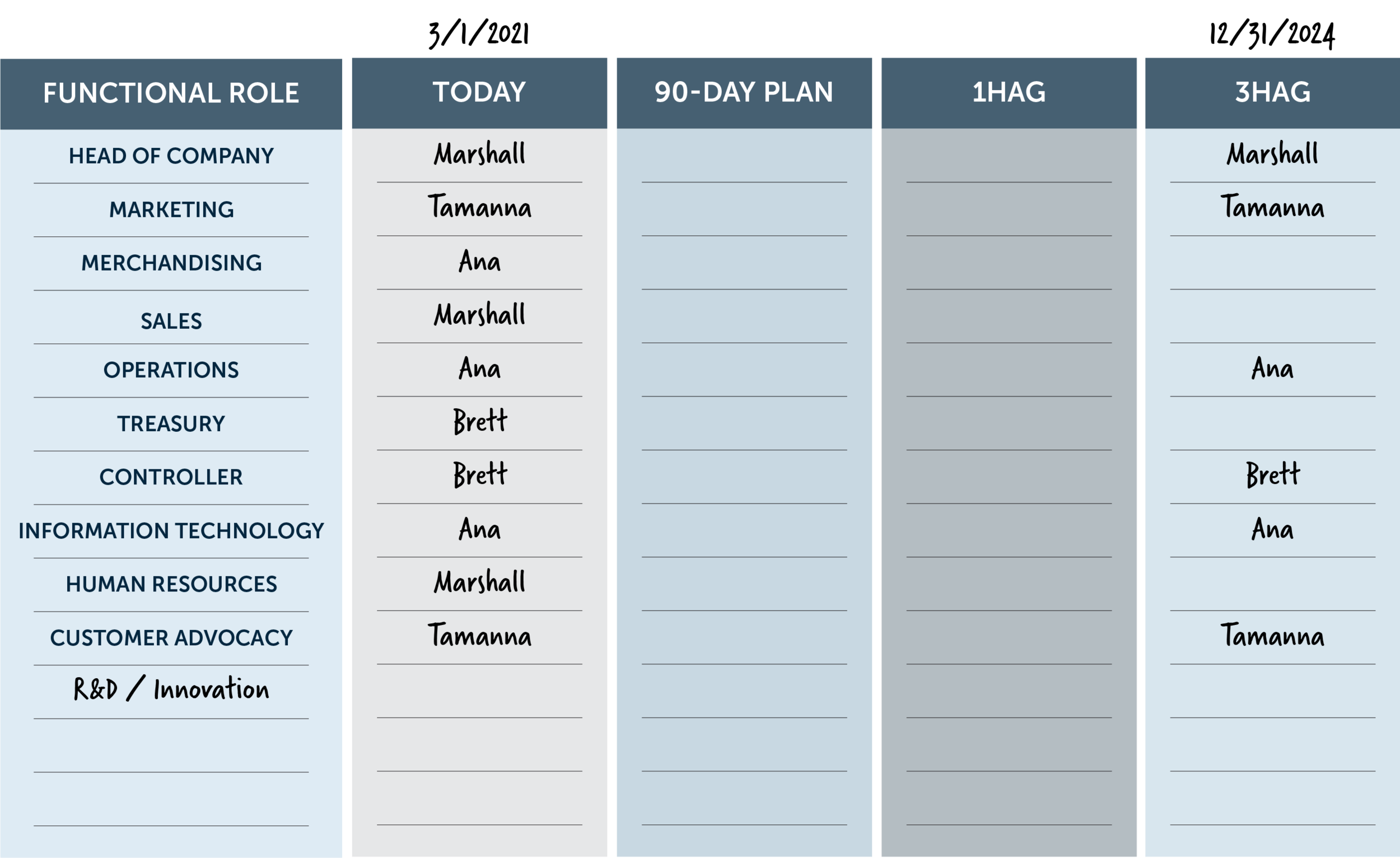
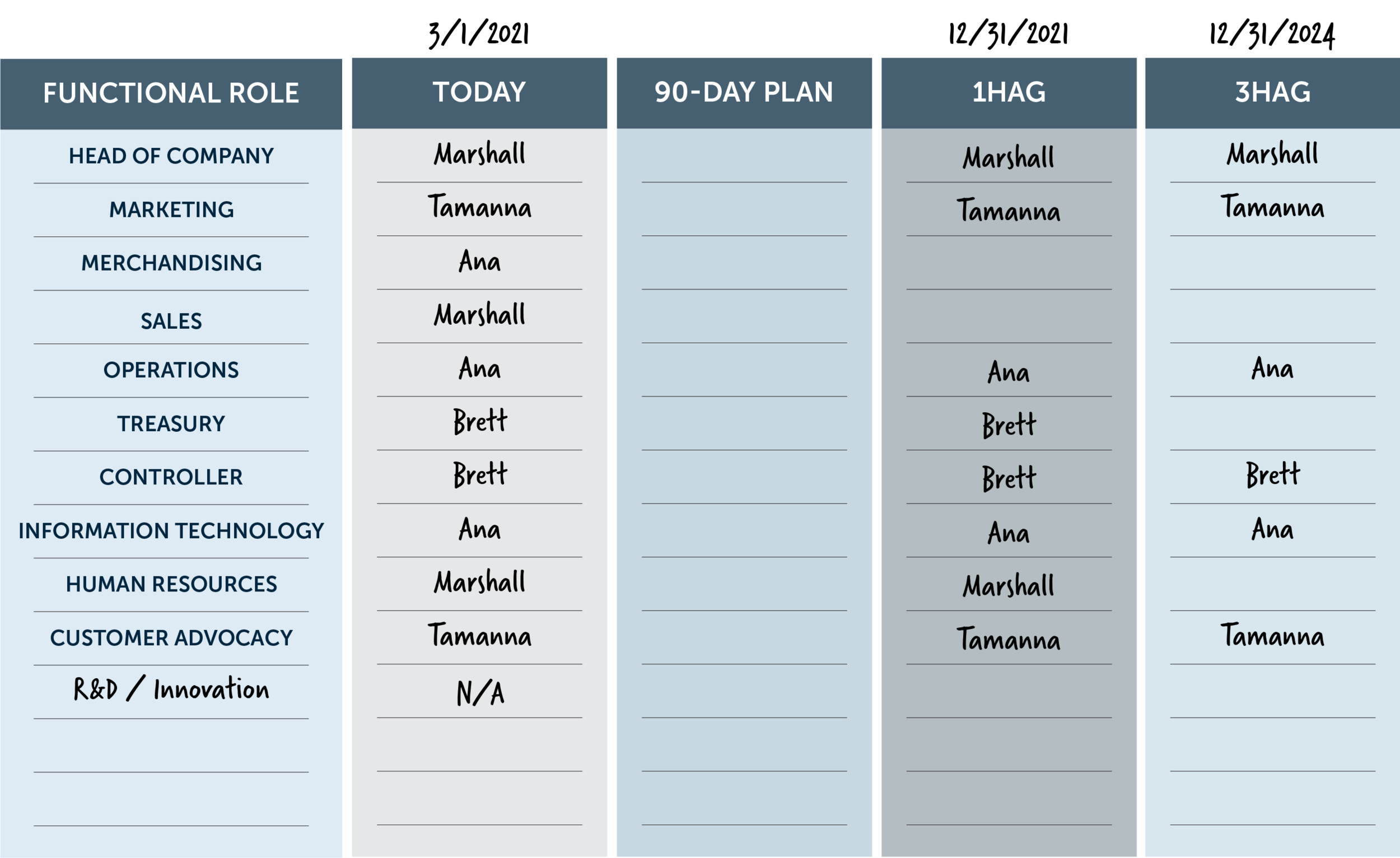
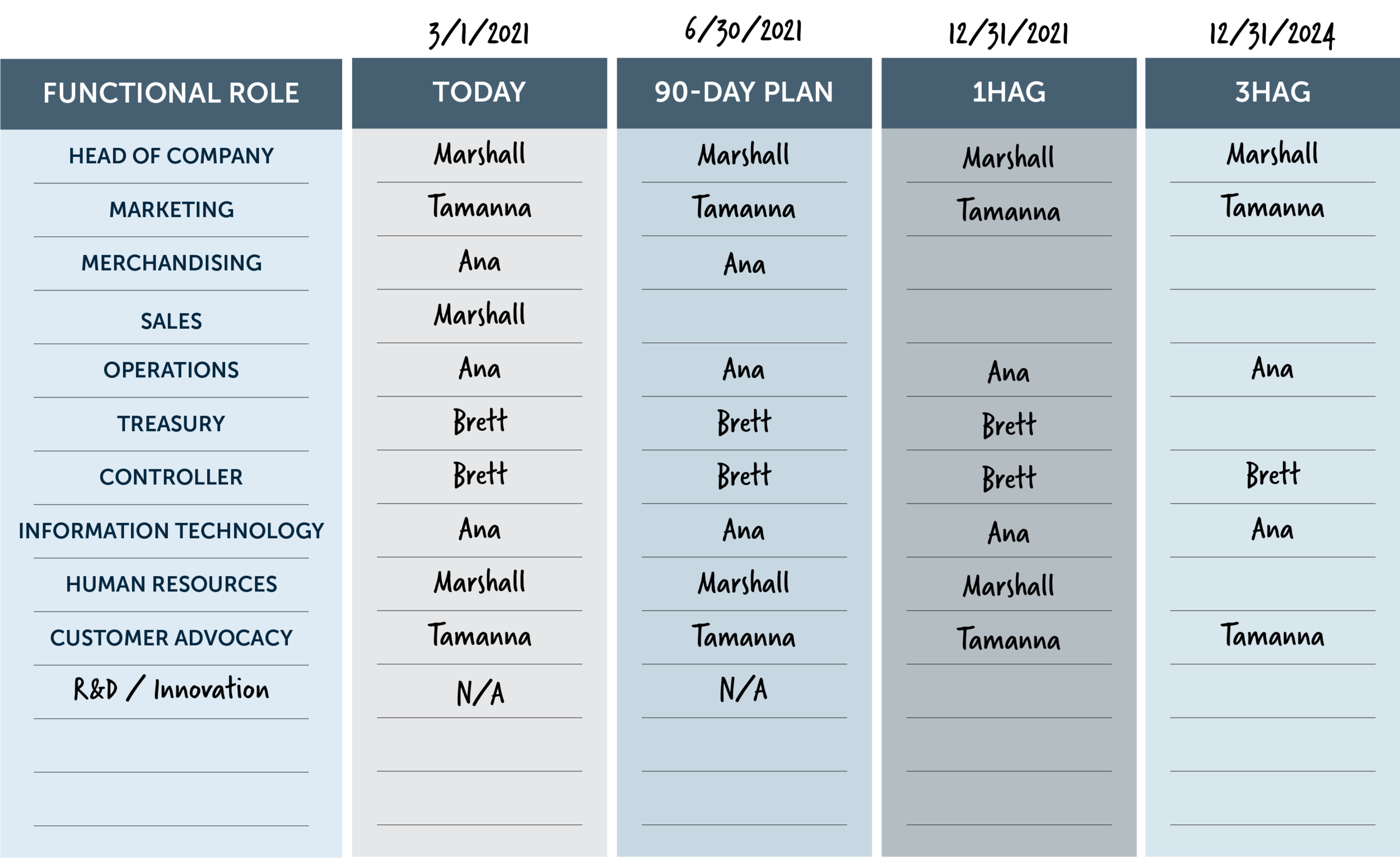
The gaps in your 90-Day Plan reveal your most crucial hires – the role, by the end of the quarter you need filled.
The Job Scorecard
Further than knowing what roles need to be filled, we also need to determine what success looks like in those roles. For that, we recommend creating a Job Scorecard per the Topgrading Methodology. The Job Scorecard isn’t a vague job description, rather it is a detailed, accurate description of what a person’s job is and what their standards of success are, so that any prospective talent will understand exactly their role will be. At PFD, our job scorecards consist of four sections that drive standards of success: their competencies, functional competencies, metrics, and whether or not they exhibit core values.
When you create a Job Scorecard, you should list and accurately define the competencies that you are looking for that will make a person successful at their jobs. Because there are so many competencies, it is a rigorous standard – and we suggest you don’t hire a person that ranks poorly in even one of these competencies.
Always be recruiting
The next critical element of having an effective talent and recruitment pipeline is to quite simply, always be recruiting. If you wait to try to recruit people until you need someone, you won’t have the time you need to go through a rigorous hiring process to properly vet that person. Instead, you need to always be on the lookout for creative and brilliant talent. Consider these four strategies to always have a pipeline of people:
Ask for employee referrals. Your best people will have talented friends, and if you ask, they might have some people in their network that will fill roles that you need. Critically, if you do receive a referral and job application, you absolutely need to make sure that you follow up. If you do not follow up on the referrals, you run the risk of creating a disconnect in trust with your employees, as you are telling them one thing is a priority, and you are acting as though that is not true.
Create community partnerships. With the right community partners, your network vastly opens up, and you might be surprised at the amount of talent that is out there. At PFD, we connect with professors who have similar values to us, and we ask them to refer their best students for internships.
Connect with talent recruitment agencies. Don’t overlook obvious solution to a talent problem, just because it is obvious. As senior leaders, our time and energy are our most precious resources, so if we can take some cash and outsource recruitment activities that are burning up these resources, do it! Find a recruiter who is right for your company (they believe in and live out of your cultural foundation), and let the professionals do their job.
Be opportunistic. Sometimes, we can’t plan when we meet extraordinary talent – but we need to be prepared to recruit them when we do. Always have an understanding of your recruitment needs (per your SFACe) as well as a business card to give out. In the past, I have hired restaurant wait staff into operations roles, and that person excelled in that position.
Rigorous Hiring Process
The last crucial element to a talent recruitment strategy is having a rigorous hiring process. Again, at PFD, we recommend the Topgrading Methodology. The idea behind Topgrading is simple. Most companies hire fast and fire slow, and by doing this, they are hiring and keeping people in their organizations who they wouldn’t “rehire” if given the opportunity. Topgrading adds rigor – it allows those who are making the hiring decisions to truly take their time and consider their candidates. By adding this rigor, we are ensuring that we truly are hiring the right people in the right roles – vastly increasing the success rate hiring from 50% to 90%.
I recommend reading the book Topgrading by Brad and Geoff Smart for more information on this process.
With these four elements, you should vastly improve your talent and recruitment strategy – being able to hire the right people in the right roles at the right time.
If you would like to talk more in-depth about any of the concepts listed here, as well as your overall business strategy, we would be happy to chat with you at the FREE May 13th, 2021 Virtual Workshop with Shannon Susko.
